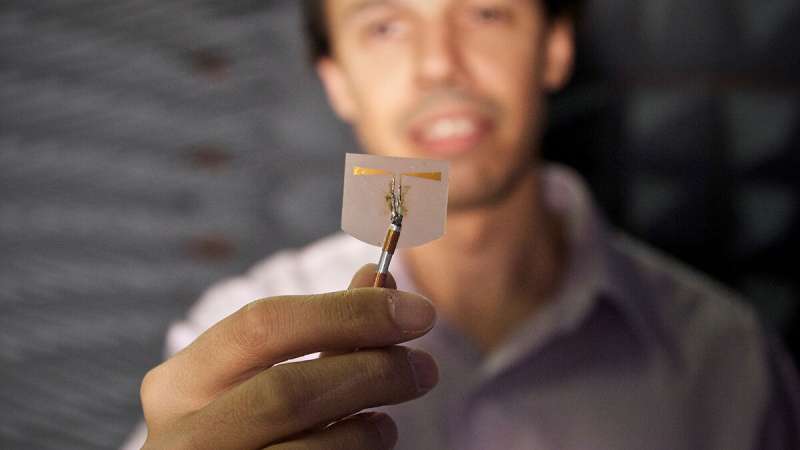New touch-free vital signs monitoring technique

Scientists at Heriot-Watt University have developed a technique that monitors a patient's vital signs completely touch free.
By using a continuous wave radar-based system to sense tiny chest movements, the new method can accurately measure an individual's heart rate and respiratory rate without the need for wires, probes, wearable technology or other skin attachments. It could also identify early signs of heart disease like arrythmia while highlighting deterioration for those living with dementia.
The new technique will benefit all ages as well as those with COVID-19 where the risk of cross-infection is high.
Associate professor Dr. Dimitris Anagnostou, the project lead, explains: "Continuous monitoring of an individual's vital signs can be necessary for several reasons. In hospital, it helps clinicians to determine which patients need urgent help, if someone is improving and can provide early warning signs of a more significant problem allowing quicker intervention.
"For infants and young children, extended use of electrodes and probes can cause skin damage as well as additional distress. Burn patients and those with compromised skin conditions are more challenging to monitor for long periods with wired devices. Our technology allows a patient full mobility while being monitored 24/7. Capable of working unmanned, the signal can also penetrate walls and protects privacy.
"Our approach has wide-reaching applications for the treatment of COVID-19 and can allow the progression of the virus to be monitored long-term without increasing the risk of infection."
For many elderly people, monitoring is now necessary at home. Despite leaps forward in technology, such as wearable sensors embedded in watches, for individuals living with dementia, remembering to put on a watch or wearing one continuously is problematic.
Dr. Anagnostou continues: "While our technology is not designed to be a diagnostic tool, we are confident it can support those with assisted living needs to remain at home for longer with greater confidence that they have unintrusive, real-time, continuous health monitoring. This technology clearly demonstrates what can be achieved through academic collaboration across disciplines and institutes."
Radars have been widely used for many years to determine the distance between aircrafts or the velocity of a vehicle by comparing the frequency or phase shift of the reflected and transmitted signals.
The new research works by detecting tiny physiological movements in the body of around 1mm even when an individual is asleep. The results of the research indicate excellent accuracy even if a relatively low frequency (2.4 GHz) is used, thanks to the novel system architecture and specialized components. It is believed this will aid its progression into home and clinical settings more quickly.
The team has designed a proof-of-concept prototype which can be built into a hospital headboard or mounted on the ceiling. Further applications could include its use in prisons, care homes and sheltered housing.
The team will now take the project a step further, utilizing Wi-Fi signals to extract complimentary location and position tracking data that will further support those with assisted living needs to feel safer at home. The team will trial the technology which shows when a person has fallen or if their daily movements have significantly changed, highlighting the progression of several degenerative diseases.




















